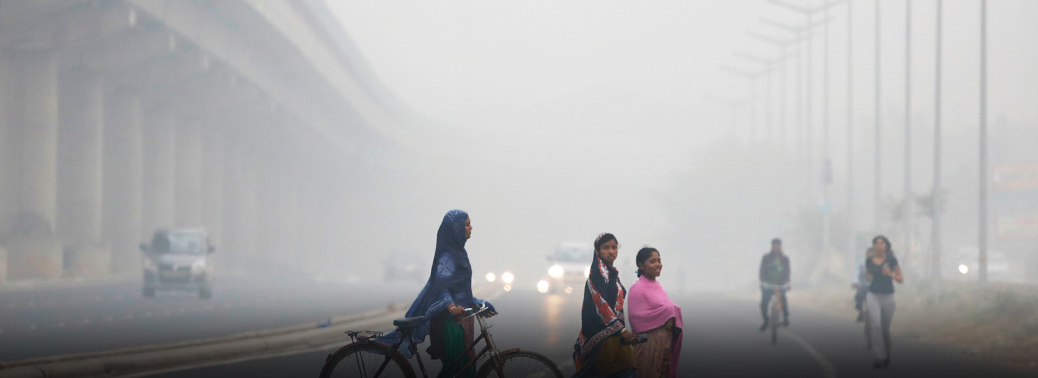Pollution hits a high in Delhi
15, Oct 2018

Prelims level :
Mains level : G.S- III Conservation, environmental pollution and degradation, environmental impact assessment
Why in News?
- The Capital continues to battle dangerous levels of pollution and it recorded its worst score on the Air Quality Index (AQI) for the season.
Very poor category:
- The city registered an average AQI of 366, which falls in the ‘very poor’ category, based on the reading of 32 monitoring stations. The Capital was engulfed in haze throughout the day.
- Data by the Central Pollution Control Board (CPCB) showed several areas in the NCR, including Gurugram and Ghaziabad, recorded AQI in the ‘severe’ category.
- There are six AQI categories, namely Good, Satisfactory, Moderately polluted, Poor, Very Poor, and Severe. The proposed AQI will consider eight pollutants (PM10, PM2.5, NO2, SO2, CO, O3, NH3, and Pb) for which short-term (up to 24-hourly averaging period) National Ambient Air Quality Standards are prescribed.
- Based on the measured ambient concentrations, corresponding standards and likely health impact, a sub-index is calculated for each of these pollutants. The worst sub-index reflects overall AQI.
- The AQI values and corresponding ambient concentrations (health breakpoints) as well as associated likely health impacts for the identified eight pollutants are as follows:

Level of PM2.5 and PM10:
- The PM2.5 level in the city was recorded at 236 micrograms per cubic metre (ug/m3), the highest of the season so far. The PM10 level stood at 394 ug/m3, as per CPCB data. Safe limits for PM2.5 and PM10 are 60 ug/m3 and 100 ug/m3 respectively.
Reasons for poor air quality:
Environmentalists said that the dip in air quality was due to
- Construction dust
- Vehicular pollution
- Stubble burning in Punjab and Haryana
- Deforestation and high Population Density
- Emissions from Factories
- Other Factors- Diwali, Geography, the Winter Season
Recommendations to check pollution:
- The CPCB has issued health advisories and recommended stringent measures from November 1 to 10 forecasting further deterioration in air quality ahead of Diwali. Some of the recommendations include
- Shutting down coal and biomass factories,
- Increased inspection by Transport Department to check polluting vehicles
- Reducing traffic congestion in the NCR.
- The Centre-run System of Air Quality Forecasting and Research (SAFAR) also issued a health advisory urging people with heart or lung disease to avoid prolonged or heavy exertion in the open. It also recommended that people go for shorter walks instead of jogs, keep windows closed and wear masks.
- SAFAR envisages a research-based management system where strategies of air pollution mitigation go hand in hand with nation’s economic development to target a win-win scenario.
- The ultimate objective of the project is to increase awareness among general public regarding the air quality in their city well in advance so that appropriate mitigation measures and systematic action can be taken up for betterment of air quality and related health issues.
- Its engineer’s awareness drive by educating public, prompting self-mitigation and also to help develop mitigation strategies for policy makers.
- SAFAR stated that pollution levels are likely to increase but will not touch ‘severe’ level
- for the next three days.
- This is owing to stagnation conditions forced by calm winds with low ventilation and moderate stubble injection, stated SAFAR.
#righttobreathe
- On some of the social media, #righttobreathe trended where Delhiites used the hashtag to express concern over the rising pollution.
- One can escape the epidemic and water pollution. But there is no escape from air pollution. Air is everywhere.






